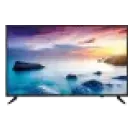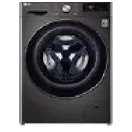Browse an assortment of set top boxes and accessories on Bajaj Mall. Head to any of Bajaj Finserv’s 1.5 lakh partner stores across 4,000 cities in India to discover a wide selection of TVs. Choose the model that best fits your needs and take advantage of zero down payment offers, making your purchase more affordable by converting the cost into Easy EMIs.
3 min
08-Nov-2024
Connecting two TVs with a single set top box is a practical way to enjoy entertainment on multiple screens without doubling the cost. With simple HDMI splitters or wireless transmitters, you can stream the same content across both TVs effortlessly. This setup is ideal for homes where family members want to watch in different rooms or enjoy movies on a larger display.
Browse an assortment of set top boxes and accessories on Bajaj Mall. Head to any of Bajaj Finserv’s 1.5 lakh partner stores across 4,000 cities in India to discover a wide selection of TVs. Choose the model that best fits your needs and take advantage of zero down payment offers, making your purchase more affordable by converting the cost into Easy EMIs.
Browse an assortment of set top boxes and accessories on Bajaj Mall. Head to any of Bajaj Finserv’s 1.5 lakh partner stores across 4,000 cities in India to discover a wide selection of TVs. Choose the model that best fits your needs and take advantage of zero down payment offers, making your purchase more affordable by converting the cost into Easy EMIs.
Guide to connecting two TVs to a single set top box
Sharing a single set top box between two TVs is an efficient way to enjoy entertainment in multiple rooms without incurring additional subscription fees. Whether you want to watch the same programme on both screens or extend your content to another room, setting up this connection is simple. HDMI splitters, RF modulators, or wireless transmitters are popular solutions for linking two TVs. However, understanding the compatibility between your television models and the set top box is crucial to ensure seamless streaming.
To understand more about display technologies, explore the HD vs HDR TV comparison and select the right TV for your needs.
Secondly, keep both TVs updated with the latest firmware to ensure compatibility with the set top box’s software. Additionally, some set top boxes offer multi room support, allowing different channels to play on separate TVs. If your device lacks this feature, remember that using a splitter will limit both TVs to the same content.
For easy switching between channels or apps, consider using a touch screen TV for more interactive controls. A good remote control setup with programmable buttons can also make managing content across two TVs more convenient.
Finally, if you plan to use this setup regularly, invest in high quality HDMI cables or wireless transmitters to avoid connectivity issues. Testing the system periodically ensures a smooth entertainment experience without disruptions. With the right configuration, you can enjoy seamless streaming on multiple screens without needing extra subscriptions.
Essential steps for setup
- Check compatibility: Ensure that your set top box supports multiple outputs (like HDMI or AV) required for two TVs.
- Select the right connection method: Use an HDMI splitter if both TVs have HDMI ports, or an RF modulator for older TV models without HDMI.
- Connect your devices:
- For LED TVs, connect an HDMI splitter to the set top box and run HDMI cables to both TVs.
- For wireless solutions, plug a transmitter into the set top box and receivers into each TV.
- Configure TV settings: Set both TVs to the correct input source (e.g., HDMI 1).
- Test the connection: Power on the set top box and TVs to verify that both screens display the same content.
Connection methods for two TVs
| Method | Description | Pros | Cons |
| HDMI splitter | Splits one HDMI output to two TVs | Simple setup, high quality video | Both TVs must show the same content |
| Wireless transmitter | Sends content wirelessly from set top box to TVs | No cables required, great for multiple rooms | May face interference over distance |
| RF modulator | Converts HDMI to coaxial for older TVs | Works with older TVs without HDMI ports | Lower picture quality compared to HDMI |
| AV cable splitter | Splits composite video output for older TVs | Affordable solution for older setups | Lower resolution, limited to SD quality |
To understand more about display technologies, explore the HD vs HDR TV comparison and select the right TV for your needs.
Tips for efficiently using one set top box with multiple TVs
Setting up two TVs with a single set top box can be a smart solution, but optimising the experience requires a few tricks. First, consider the location of your set top box. Placing it in a central area helps minimise the length of cables or ensure the best wireless signal. If you are using a wireless transmitter, position the transmitter and receivers away from other electronic devices to avoid signal interference.Secondly, keep both TVs updated with the latest firmware to ensure compatibility with the set top box’s software. Additionally, some set top boxes offer multi room support, allowing different channels to play on separate TVs. If your device lacks this feature, remember that using a splitter will limit both TVs to the same content.
For easy switching between channels or apps, consider using a touch screen TV for more interactive controls. A good remote control setup with programmable buttons can also make managing content across two TVs more convenient.
Finally, if you plan to use this setup regularly, invest in high quality HDMI cables or wireless transmitters to avoid connectivity issues. Testing the system periodically ensures a smooth entertainment experience without disruptions. With the right configuration, you can enjoy seamless streaming on multiple screens without needing extra subscriptions.
Explore TVs on EMI with Bajaj Finserv
For those seeking a reliable TV, you can explore a range of options on Bajaj Mall. Once you have reviewed all the product details, simply visit your nearest Bajaj Finserv partner store to select your preferred model. With financing options from Bajaj Finserv, you can easily purchase your favourite TV without worrying about the budget. Additionally, you have the flexibility to choose a convenient repayment tenure, allowing you to settle the cost in affordable EMIs. Bajaj Finserv also offers financing solutions on electronics.Benefits of shopping with Bajaj Finserv
- Affordable pricing: Enjoy cost effective pricing on TVs at any of the Bajaj Finserv partner stores, making your investment lighter on the wallet.Easy EMIs: Buying a TV is now more convenient. With financing from Bajaj Finserv, opt for flexible repayment options and spread the cost over Easy EMIs.Zero down payment: Say goodbye to upfront costs. Selected TVs come with a zero down payment option, letting you pay gradually without an initial lump sum.Wide range and accessibility: Access a vast selection of TVs across multiple partner stores, making it easy to find the perfect fit for your home.Special deals and cashback: Unlock exciting offers and cashback when you choose a TV with Bajaj Finserv’s financing options.Complimentary home delivery: Enjoy the convenience of free home delivery on selected TVs, enhancing your overall shopping experience.
Frequently asked questions
What equipment do I need to connect two TVs to one set top box?
To connect two TVs to one set top box, you will need an HDMI splitter or a coaxial cable splitter, depending on the type of connection. HDMI splitters allow for multiple HDMI outputs, while coaxial splitters can distribute the cable signal. Additionally, you may require extra HDMI or coaxial cables for the connections between the devices.
What is the step by step process for making the connection?
First, ensure both TVs and the set top box are powered off. If using an HDMI splitter, connect the splitter to the set top box's HDMI output. Then, attach the HDMI cables from the splitter to each TV. For coaxial splitters, connect the splitter to the set top box's coaxial output and run cables to each TV. Finally, power everything on.
Are there any limitations or considerations to be aware of?
When connecting two TVs to one set top box, be aware that both TVs will display the same content simultaneously. This may limit the viewing experience if users want to watch different channels. Additionally, signal quality may decrease with lower quality splitters or longer cable runs, potentially impacting video and audio quality.
Show More
Show Less











